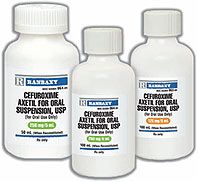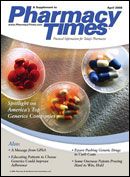Publication
Article
Generic Supplements
Ranbaxy: Trusted Medicines for Better Lives
Ensuring the availability of quality medicines at affordable prices around the world.
Ranbaxy Laboratories Ltd (RLL) is an integrated, research-based, international pharmaceutical company producing a wide range of quality, affordable generic medicines that are trusted by health care professionals and patients worldwide. With over 4 decades of experience, Ranbaxy is one of the world's top 10 generic pharmaceutical companies, and the company belief is that access to quality health care is a right, not a privilege. The company's chief endeavor is to ensure the availability of quality medicines at affordable prices across the globe. Ranbaxy is committed to working toward a healthier and happier world. Ranbaxy Pharmaceuticals Inc (RPI), based in Jacksonville, Florida, is a wholly owned subsidiary of RLL, and was created to sell and distribute generic prescription products in the US health care system.
RLL entered the American generic pharmaceutical market in 1994 and introduced its first product under the RPI label in January 1998. Since then, RPI's generic line has experienced consistent growth and expansion over the years. To date, Ranbaxy has filed 239 Abbreviated New Drug Applications (ANDAs) with the FDA and has received approval for 142 applications, with 97 pending final approval. Today, RPI remains unrelenting in this effort, with a goal of submitting more than 20 ANDAs peryear. This fits strategically with RPI's policy of featuring an extensive product portfolio of high-quality and affordable generic product formulations that are readily accessible through established distribution channels to patients and prescribers. Plans are in place to continue to add depth and breadth to the product line to meet the continually changingneeds of the US health care system.

Ranbaxy is one of the fastest-growing pharmaceutical companies in the United States, and its product portfolio features a number of compounds and other quality generic pharmaceuticals in a wide variety of therapeutic areas, such as anti-infectives, cardiovascular medicines, nonsteroidal anti-inflammatory drugs, antiexpectorants, analgesics, gastrointestinal products, central nervous system products, and controlled substances. These products are formulated as capsules, tablets, and liquids, and are produced within current good manufacturing practices facilities that are inspected by the FDA. The products then become available in the market through various chain and independent pharmacies and other classes of trade, such as wholesalers, generic distributors, and hospitals.
Ranbaxy's exceptional growth and success can be attributed to being vertically integrated; that is, to have the ability to develop a product in the lab and ultimately commercialize the product formulation in the market. This means that Ranbaxy has total control of many of its products by performing every step in the process, from producing the active ingredient, manufacturing the finished dosage form, to marketing and distributing the product to pharmacies throughout the United States. Ranbaxy's vertical integration results in an efficient and reliable process, allowing products to be available to the public at a competitive price.
Currently, RPI has administrative offices located in Princeton, New Jersey; manufacturing plants in North Brunswick and New Brunswick, New Jersey, and Gloversville, New York; and sales offices and distribution facilities in Jacksonville, Florida. This is just a small part of Ranbaxy's global footprint, as the company serves customers in over 125 countries, with ground operations in 49 markets and manufacturing operations in 11 countries, along with an expanding international portfolio of affiliates, joint ventures, and strategic alliances.
For more information, visit Ranbaxy Pharmaceuticals Inc's Web site at www.ranbaxyusa.com, or call 888-RANBAXY (888-726-2299).







